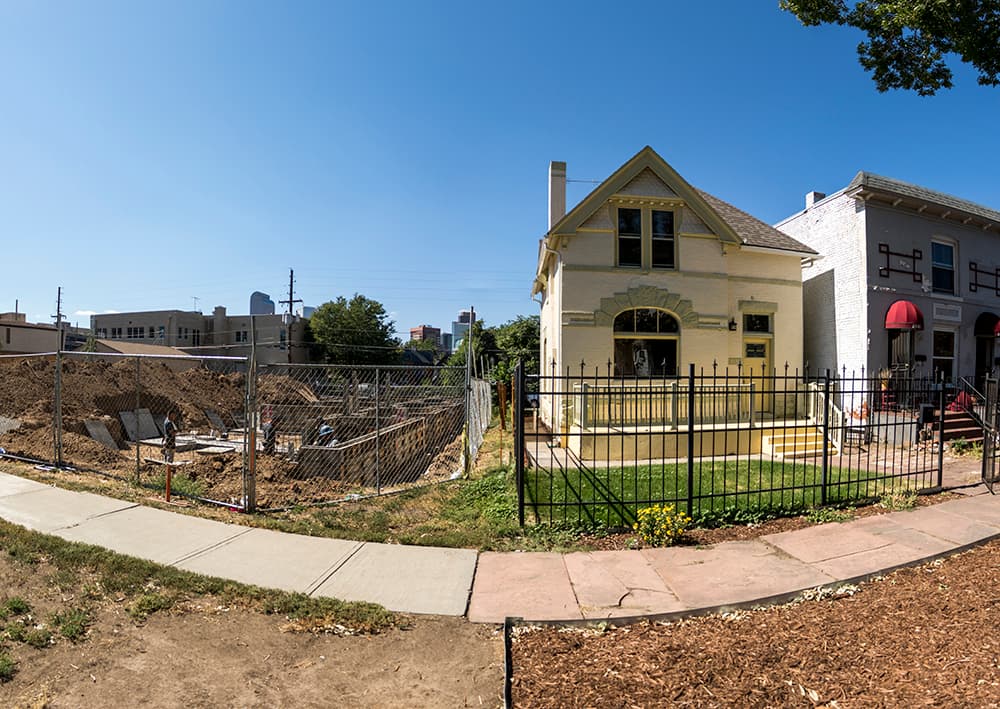
Denver has released the comprehensive housing plan that will guide its investments and programs for the next five years and seek to turn the tide of what officials are deeming a housing crisis.
Assuming federal and local funding remains consistent -- something officials acknowledge is an "if," particularly on the federal level -- the plan aims to create or preserve 3,000 units of affordable housing and help 30,000 households with programs that provide stability for people at risk of displacement.
What could this look like on the ground?
Property tax relief for low-income homeowners, better protections for renters, programs that provide a preference in affordable housing for people in rapidly gentrifying neighborhoods, more consistent requirements for new affordable housing in areas with a lot of redevelopment, city investments in the land underneath the housing and a host of other initiatives.
A review draft of the plan, entitled Housing an Inclusive Denver, is available online and the city is accepting public comment on the plan until Nov. 13.
"Denver is about remaining true to our values and making sure that everyone in this city who is impacted by the economic expansion feels connected to the opportunities that exist here," Mayor Michael Hancock said. "When we have pressures around housing, that means people are being squeezed out. We know we need to move to address this. This new plan outlines strategies to create, preserve strong neighborhoods with diverse housing options that are accessible and affordable to all Denver residents.
Hancock said the largest demand is coming from working families and that the need for more options exists along the income spectrum. He also tied the plan to health care, workforce training and transportation. That is, there are lots of things making the city less affordable and housing less accessible.
The plan, which must be approved by Denver City Council and could be amended before its final adoption, will guide how the city spends some $15 million a year from the affordable housing fund created last year, as well as state and federal money. The "create or preserve 3,000 units" goal is similar to the 3X5 goal that Hancock launched early in his first term -- 3,000 units in five years. That was achieved in four years, but the need continues to outpace the city's ability to produce more affordable housing.
Councilwoman At-large Debbie Ortega pushed hard for the inclusion of a housing plan approved by council as part of the ordinance that created the fund. How to spend this money is a political decision about which there are a range of opinions in the community.
Members of All in Denver, an advocacy group, have called for the city to borrow money against property tax revenue to build more housing faster with a big cash infusion. Residents of Globeville and Elyria-Swansea want to see seed money for community land trusts that are controlled by residents of vulnerable neighborhoods, not just the city getting into holding land itself.
Between 40 and 50 percent of the fund would go to help the poorest people, those earning 30 percent or less of area median income and those experiencing homelessness.
The rest of the fund would be divided equally between those earning 31 percent to 80 percent of area median income and trying to find or stay in rental housing and those who are trying to become homeowners or stay in homes they already own.
Erik Soliván, director of the Office of HOPE, said one of the big innovations in the plan is far greater coordination between efforts to help people find housing and efforts to help people with job training and access to health resources. More than 60 percent of Denver's homeless people work, but their wages do not allow them to cover their housing costs.
The other major change from previous city policy is more focus on direct assistance that will help people right away. One criticism of the city's efforts to date has been that housing that takes years to plan and build doesn't help the people being priced out today. Already in the 2018 budget, the city has set aside money to pay a month's rent or utility bills for people at risk of eviction -- or who have been evicted and need a new place to stay.
Offering more immediate assistance means the housing fund can help people well beyond the number of new units that are constructed -- a number that will never keep pace with demand. An estimated 68,000 renters in the city are cost-burdened, meaning they are paying more than 30 percent of their income toward housing. An estimated 29,000 very low-income renters are "severely cost-burdened," meaning they are paying more than 50 percent of their income toward housing.
An additional 35,000 homeowners are cost-burdened.
In addition to providing money for housing and services, the plan proposes legislation and regulatory changes to promote new housing and access to existing housing. It calls for the creation of a rental registry and new land use rules for areas near transit stations, for the city to lobby for an extension of the state low-income housing tax credit that helps finance affordable housing and for the city to enact rules making it easier to preserve existing affordable housing.
And the plan proposes that the city use its own land for affordable housing where feasible and buy up land in strategic locations to preserve it for affordable housing. These efforts could include the creation of a land trust through which the city maintains long-term ownership of the land to keep it affordable.
You can read the full plan here. Have thoughts? Drop me an email at [email protected].













